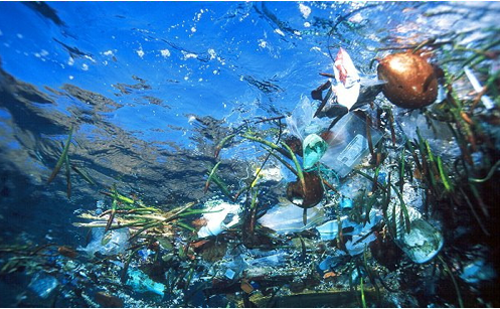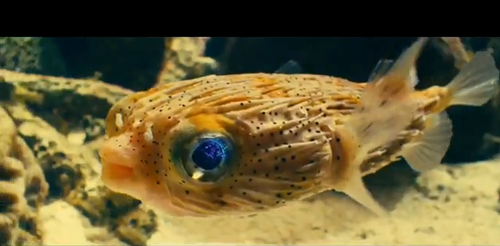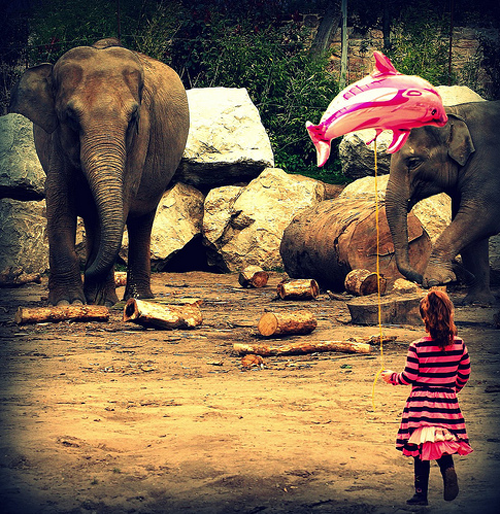DisneyNature 'Oceans' Seduces Marine Lovers
/Photo from ‘Oceans’ trailer, movie opening April 22 in US http://bit.ly/a6ZQiT
We knew something was going on with ‘oceans’ when a small AC new post moved to the top read for several days this week.
Updating the story was an education in the challenges — not only for coral reefs — but all of biostructures of oceans and the creatures calling them home.
Reading this week’s TIME magazine, we have the answer. Disney’s movie ‘Oceans’ opened in France, drawing twice as many viewers as George Clooney’s ‘Up in the Air’.
‘Oceans’ Trailer
The discussions around ‘Oceans’ highlight a different approach to environmental action, one that resonates with us at Anne of Carversville. Admittedly, we didn’t set out to become dolphin activists who worry about biodiversity in Madagascar.
Besides being my own personal journal, the website originally asked people to just stop and smell the Carversville roses in their own lives.
Doom and gloom environmental lecturing is not our style, especially in a world of intelligent readers with critical-thinking abilities. We have no credentials — but also no agenda — in the environmental action debate on land, sky or sea.
Anne of Carversville does believe that if humans lived in greater harmony with nature, we would exercise better judgment in killing each other and honoring female principles.
Although climatologists and environmentalists cry ‘foul’ over Climategate, I am personally astonished how much contradictory information is hitting the research screen. Just this week, researchers published the results that black carbon from India, not greenhouse gases, are the primary cause of Himalayan glacier melt.
As a rational thinker who understands the economic stakes involved in retooling economies, I was shocked to read that scientists had never investigated this second possibility that carbon, not greehouse gases, are a big cause of environmental change in the Himalayas.
Apparently, silo thinking isn’t only a problem in business.
If you’ve ever worked in developing countries, as I have for weeks and not just sitting in a five-star hotel, you understand soot and carbon on your skin and your clothes. Why scientists wouldn’t tie black carbon to Himalayan glacier melt is beyond me — but then, I’m not a climate scientist.
While environmental scientists and politicians duke it out, we’re communicating undeniable truths about our oceans and the creatures who call it home.
‘Oceans’ film photographs life in five oceansIt’s true that dolphins are slaughtered to feed comparatively few people in Japan.We read that cultural pride is a major concern among the fisherman of Tajii, just as with the management of Toyota. Saving face means everything in Japan.
There’s no doubt that 20% of the world’s coral reefs have died and another 20% are on life support.
When fisherman pour poison into fishing waters, to make the catch easier, it’s logical that marine life expires. Forgetting damage to humans for one moment, even I don’t need a PhD in marine biiology to understand that the seas should not be poisoned.
Until recently most Americans thought that the Good Fairy of Waste Disposal just waved her ‘I will make everything better’ wand, and garbage vanished on earth.
I’ve consumed with the best of American shoppers, but when the reality of the Great Pacific Garbage Dump (Patch) hit my radar, I stopped using plastic bottles whenever possible. Nor did I need to board a shipping vessel to see the damage.
One day last winter, a good friend and I walked along the water in New Jersey, and I was astonished to see the garbage heap washed up along the shore. It was a positively disgusting commentary on brands and humans, too, as Coke, Pepsi, and Heineken littered the shoreline.
The movie ‘Océans’ explores the wonderment of the world’s seas, asking us to connect emotionally and psychologically with the sea, a great metaphor for feminine principles, both as the unconscious mind and source of life. TIME writes:
Océans is no Jacques Cousteau rehash, and its environmental message, while alarming, doesn’t impose the sense of doom central to recent films like Al Gore’s An Inconvenient Truth or Frenchman Yann Arthus-Bertrand’s Home. Instead it seduces the viewer to the maritime cause with awe-inspiring imagery, creating an almost emotional attachment between viewer and cinematic object by bringing the camera into astonishing intimacy with erstwhile unapproachable beings. At one point, a mother walrus hugs her baby protectively as she swims. At another, a diver caresses and plays with an 18-foot, 1-ton great white shark nicknamed “Lady Mystery.”
Watching a video about the Southern Triangle this week, the seductive beauty and the interconnections of life were mesmerizing.
In a maddening twist of environmental fate, the most beautiful sunsets result from chemicals and pollution in the air.
As Fashion Director and head of product development for Victoria’s Secret, I preferred chemicals in Korean dyes that were illegal in the US. Having a perfectionist eye for color, I simply adored the color ranges available overseas, without considering the environmental damage I promoted as the largest buyer of polyester in South Korea at the time.
The colors of the sea are another story.
We can’t delude ourselves with chemically-created metamerisms in silks and man-made sunsets. The intense colors of our oceans — revealed in movies like ‘Oceans’ — are dying an unnatural death.
While Bill Gates invests in new technology to ‘paint’ a false grey roof over the earth, until we figure out all the real reasons behind global warming, our seas are only beginning to receive attention. While 11 percent of the earth is under some kind of environmental stewardship, our seas have been neglected.
Reviewers of ‘Oceans’, opening in America on Earth Day April 22 promise us a visual extravaganza that will not only delight our senses and imaginations but hopefully establish a connection between humans and the life we are killing, whether intentionally or in our lack of knowledge.
If you are a regular reader of Anne of Carversville, then you know that I believe deeply in the concept of female principles in our way forward for the 21st century. For all man’s achievements — and I hold many in high regard — we also have a serious global mess on our hands.
For centuries, the thinking has been that man should triumph over nature. To be human required men to walk all over Mother Earth, showing her who’s boss.
Many people of both genders now see the complexity of actions and results from this philosophy, believing that it’s not OK to kill all the dolphins. Perhaps elephants do have some kind of rights to exist. Should we really eat the very last bluefin tuna in the Mediterranean, just to give fisherman a job for another couple of years?
‘Oceans’ hopes to change our minds and make sensual activists out of us. We don’t have to buy into every single argument about saving the oceans. I’m sure there’s conflicting science about just what’s killing our seas, just as climatologists can’t agree on global warming.
Let us pursue just the facts for a starter. Each of us can look at the videos of fish trying to swim through The Great Pacific Garbage Dump and see that they will die for lack of air.
As for poisoning fish to make the catch easier, if someone hands you a glass of hemlock, you will die drinking it, even if you shared the glass with another person.
When the fish are gone because we ate them all, we can’t push the ‘restart’ button on the DVD, choosing a difference theme for this version of our life movie. Unlike ‘Oceans’ the reality of marine life is not a movie.
Jacques Perrin, who co-wrote and co-produced the movie with sidekick Jacques Cluzaud, sums up his ocean mission with words we all embrace:
“We’re entertainers, and I don’t want to be pretentious and start moralizing. But Océans is part of our means of persuasion. We must react urgently, protect, create blue helmets for the sea. Otherwise, humanity is headed toward an unbearable solitude.”
I will reframe the issue a bit differently, because many techno wizards argue that virtual reality will fill in the gap. Whatever humans want: flowers, trees, marine life can be created on computers.
What is the gap — 100 years, 300 years — while we still live in ‘real life’ waiting to morph into some kind of robotic avatar being who needs nothing natural.
Having killed species as we please, because we are human with the ‘right’ to to subordinate nature to our will, is there any assurance we will have the life essentials we need for this journey?
Have all the smart guys actually mapped out this evolution of humanity, or are we just flying by the seats of our khaki pants in this endeavor?
Scientists chose not to wonder about carbon affecting melting glaciers in the Himalayas because it didn’t suit their scientific purpose and research plans. A full inquiry into glacier melt wasn’t part of their strategy, because CO2 emissions is their benefit plan.
Doesn’t the Great Pacific Garbage Dump reflect a similar mentality about lack of reasoning? Or am I just having a typical female over-reaction here, you know — the dumb blond mentality and too much raw emotionalism. Anne
Photos: Garbage Patch photo from Mister Sustainable; Elephant and dophin from Seeing pink on Flickr; Young girl photo from Flora Bella Collection, from a gifted photographer who understands beauty in our lives.






